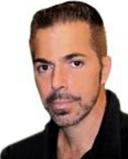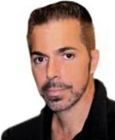Meditation
What Does Quantum Mechanics Say About Mind Powers?
The powers of creation exist within us.
Posted September 11, 2023 Reviewed by Kaja Perina
Key points
- Mere knowledge in the experimenter’s mind is sufficient to convert possibility to reality.
- Not only are objects mere appearance, but even their shapes are nothing but a form of the mind.
- Science has carried the bizarre activity of the quantum world into the macroscopic and biological world.

Hints about the biocentric nature of the universe have been made by some of the greatest scientists in modern physics, including Max Planck, Erwin Schrödinger, Werner Heisenberg, and Niels Bohr—the founders of quantum mechanics. Schrödinger, who won the Nobel prize back in 1933, said “Consciousness cannot be accounted for in physical terms. For consciousness is absolutely fundamental.”
Bohr, one of the greatest quantum physicists ever to live, went a step further: “When we measure something, we are forcing an undetermined, undefined world to assume an experimental value. We are not measuring the world, we are creating it.”
We define the structure of reality
That being said, new research by theoretical physicist Dmitriy Podolskiy, in collaboration with the author, and Andrei Barvinsky (one of the world’s leading theorists in quantum gravity and quantum cosmology) has revealed something remarkable―that the presence of extended networks of observers defines the structure of physical reality and spacetime itself. The study represents a case in theoretical physics when the presence of observers drastically changes the behavior of observable quantities themselves not only at microscopic scales but also at very large spatio-temporal scales.
In fact, this line of research suggests it’s actually inherent to the structure of reality that observers share information about the results of their measurements and create a cognitive model of it. For, once you measure something, the wave of probability to measure the same value of the already-probed physical quantity becomes “localized” or simply "collapses."
This means that if you keep measuring the same quantity over and over again, you’ll see a similar outcome. Similarly, if you learn from somebody about the outcomes of their measurements of a physical quantity, your measurements and those of other observers influence each other―freezing the reality according to that consensus. In this sense, we define its very form, shaping the underlying quantum foam.
"Choosing" Your Past
Consider the famous two-slit experiment. When you watch a particle go through the holes, it behaves like a bullet, passing through one slit or the other. But if no one observes the particle, it exhibits the behavior of a wave and can pass through both slits at the same time. This and other experiments tell us that unobserved particles exist only as “waves of probability” as Nobel laureate Max Born demonstrated in 1926. They’re statistical predictions — nothing but a likely outcome. Until observed, they have no real existence; only when the mind sets the scaffolding in place, can they be thought of as having duration or a position in space.
Experiments make it increasingly clear that even mere knowledge in the experimenter's mind is sufficient to convert possibility to reality.
Bizarre? Consider another experiment that was published in the prestigious scientific journal Science (Jacques et al, 2007). Scientists in France shot photons into an apparatus and showed that what they did could retroactively determine something that happened in the past. You heard that right! As the photons passed a fork in the apparatus, they had to decide whether to behave like particles or waves when they hit a beam splitter. Later on—after they had traveled nearly 50 meters past the fork—the experimenter could randomly switch a second beam splitter on and off. It turns out that what the observer decided at that point determined what the particle actually did at the fork in the past. At that moment, the experimenter chose his past.
We can also look at all this from another angle: Heisenberg’s uncertainty principle, which says that that the position and the velocity of an object cannot both be measured exactly at the same time. If there really were a world out there with particles just bouncing around, then we should be able to measure all their properties. But we cannot. For instance, a particle’s exact location and momentum cannot be known at the same time. But why should it matter to a particle what you decide to measure? The answer is that the particles are not just ‘out there.’ Our mind defines them.
Indeed, Heisenberg himself (Nobel prize 1932) said ”Contemporary science has been forced by Nature herself to pose again the question of the possibility of comprehending reality by mental processes.” John Bell, the physicist who famously provided a mathematical basis for locality-violating entanglement, echoed Heisenberg, declaring, “As regards mind, I am fully convinced that it has a central place in the ultimate nature of reality.
The material world has no less a root in the mind than the poems of Aeschylus or Ovid. It is startling to realize that not only are objects mere appearance, but that even their shapes are nothing but a form of the mind.
Entanglement in the Macro World
Many scientists dismiss the implications of quantum mechanics because until recently, this observer-dependent behavior was thought to be confined to the subatomic world. However, as laid out in The Grand Biocentric Design and Observer, this is being challenged by researchers around the world. In fact, last year three scientists were awarded the Nobel prize for these and other experiments.
A few examples: An international team successfully entangled a pair of three-millimeter-wide diamonds, big enough to be those tiny earrings that people wear on their earlobes. Anton Zeilinger and his colleagues at the University of Vienna sent huge molecules called “Buckeyballs” through a diffraction grating, and a detector beyond the grating showed the clear interference pattern of wavelike behavior. Scientists at Delft have entangled small oscillators sent eight inches apart—oscillators made of 1010 atoms.
Another study, conducted at the University of Vienna, tested a gargantuan compound composed of about 5,000 protons, 5,000 neutrons, and 5,000 electrons. When they watched these giant molecules pass through slits in a barrier, the molecules behaved like little bullets and went through one slit or another. But if they did not watch, the molecules behaved in a wave-like fashion and went through more than one slit at the same time. In other words, they behaved like subatomic particles, even though they were thousands of times larger!
Quantum effects even play a role in how living things work. In 2017, researchers at Oxford successfully entangled bacteria with photons. Science has carried the bizarre activity of the quantum world right into the macroscopic and biological world. Our world! More and more scientists are coming to agree that the quantum and macro worlds are not distinct.
We are living through a profound shift in worldview, from the belief that the physical world is a pre-formed entity that just exists “out there” to one in which it belongs to the observer. It is becoming increasingly clear how intimately we are connected with the structure of the universe on every level. Only for a moment, while we sort out that the powers of creation exist within us, will it feel like madness.
Yes, we have mind powers . . . but we must play by the mind’s rules.
This post was adapted from The Grand Biocentric Design, by Robert Lanza and Matej Pavsic (BenBella Books) and Observer, by Robert Lanza and Nancy Kress (The Story Plant).
References
Podolskiy, D., Barvinsky, A.O., & Lanza, R. (2021). Parisi-Sourlas-like dimensional reduction of quantum gravity in the presence of observers. Journal of Cosmology and Astroparticle Physics, JCAP 05 (2021) 048.
Lanza, R., & Pavsic, M. (2021). The Grand Biocentric Design. Dallas, TX: BenBella Books.
Lanza, R., & Kress, N. (2023). Observer. Stamford, CT: The Story Plant.




